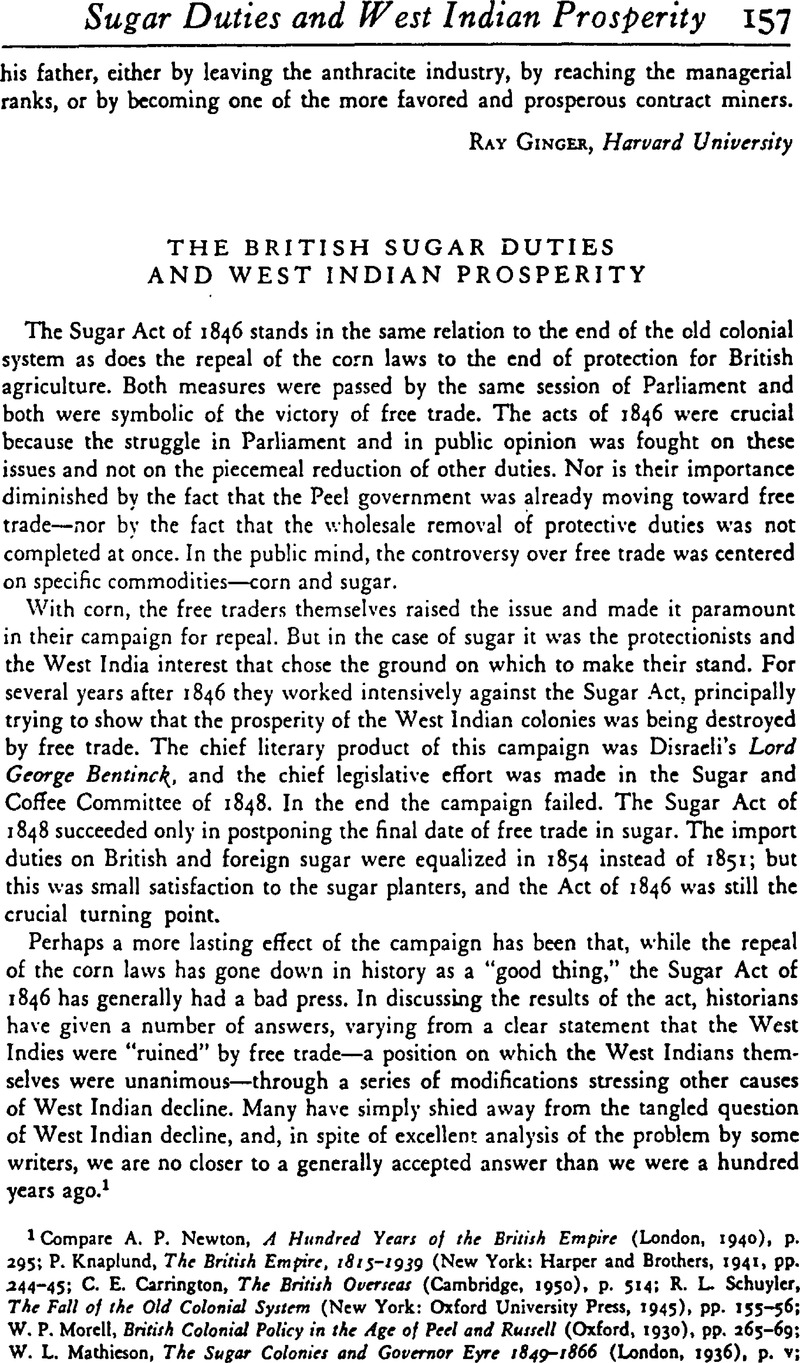Article contents
The British Sugar Duties and West Indian Prosperity
Published online by Cambridge University Press: 03 February 2011
Abstract

- Type
- Notes and Review Article
- Information
- Copyright
- Copyright © The Economic History Association 1954
References
1 Compare Newton, A. P., A Hundred years of the British Empire (London, 1940), p. 295;Google ScholarKnaplund, P., The British Empire. 1813–1939 (New York: Harper and Brothers, 1941, pp. 244–45;Google ScholarCarrington, C. E., The British Overseas (Cambridge, 1950), p. 514;Google ScholarSchuyler, R. L., The Fall of the Old Colonial System (New York: Oxford University Press, 1945), pp. 155–56;Google ScholarMorell, W. P., British Colonial Policy in the Age of Peel and Russell (Oxford, 1930), pp. 265––69;Google ScholarMathieson, W. L., The Sugar Colonies and Governor Eyre 1849–1866 (London, 1936), p. v;Google ScholarGuiilebaud, C. W., “The Crown Colonies, 1845–1870,” Cambridge History of the British Empire (Cambridge, 1940), II, 730–31;Google ScholarDeerr, N., The History of Sugar (1 vols.; London, 1949–1950), II, 446;Google ScholarBurn, W. L., British West Indies (London, 1951), pp. 126–31Google Scholar.
2 British imports of refined sugar were negligible early in the century and rose to only 3.6 per cent of the total imports during the decade 18 53–1862.
3 Parliamentary, Papers (hereafter referred to as PP), 1898, lxxxv [C. 8706], p. 218.
4 The current West Indian duty of 27r. to 30r. per cwt represents an ad valorem rate of 87 to 97 per cent. Furthermore, the elasticity of the demand for sugar was very high. Per capita consumption in Great Britain doubled in response to a 44 per cent drop in the price of sugar between 1845 and 1854.—, Deerr, History of Sugar, II, 430, 532;Google Scholar, Guillebaud, in Cambridge British Empire, II, 706Google Scholar.
5 , Deerr, Hiitory of Sugar, II, 377.Google Scholar
6 PP, 1849, xxxvii (280), p. 165.
7 PP, 1872, lxiii [C 616], pp. 72–79.
8 PP, 1867–68, xlviii [C. 3995], p. 9.
- 16
- Cited by




